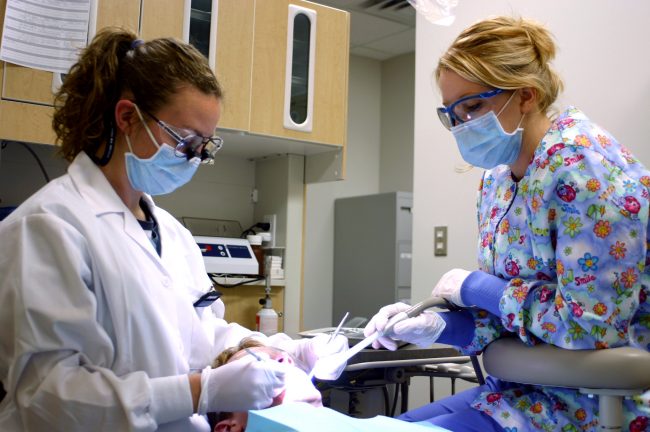
The Importance of Infection Control in Dentistry
Author: Dr. Casey Hart
Protecting Patients, Teams, and Your Future Career
Infection control is a cornerstone of modern dental care, and for good reason. Every dental assistant, hygienist, and dentist has a professional responsibility to maintain the highest standards of cleanliness and sterilization. But beyond being a basic requirement, infection control is a critical part of building trust, ensuring safety, and sustaining long-term careers in dentistry.
Why Infection Control Matters
Every day, dental professionals are exposed to saliva, blood, and aerosolized particles that can transmit diseases. Without proper safeguards, patients and team members alike are vulnerable to infections like hepatitis B and C, HIV, COVID-19, tuberculosis, and more. Infection control protects everyone, and it starts with consistent, detailed routines.
Key reasons infection control is essential:
-
Patient safety: Patients trust their dental team to provide care in a clean and sterile environment.
-
Team protection: Proper PPE (personal protective equipment) and sterilization protocols prevent cross-contamination.
-
Legal and ethical compliance: Following OSHA, CDC, and state dental board guidelines is a legal requirement.
-
Professional reputation: A single infection control failure can damage a practice’s reputation and lead to legal action.
Infection Control Practices Every Dental Assistant Should Master
Dental assistants play a frontline role in maintaining a safe clinical environment. Whether you’re just starting your career or looking to refresh your knowledge, these are the infection control basics every assistant must know:
-
Hand Hygiene
Washing hands before and after every patient interaction is the simplest yet most powerful infection control measure. -
Personal Protective Equipment (PPE)
Proper use of gloves, masks, eyewear, and gowns reduces the risk of exposure. Knowing when and how to change PPE is vital. -
Instrument Sterilization
Instruments must be cleaned, packaged, and heat-sterilized after each use. Regular monitoring of sterilizer effectiveness is also critical. -
Surface Disinfection
Dental chairs, countertops, handles, and light switches should be disinfected between every patient with approved solutions. -
Safe Handling of Sharps and Waste
Needles, blades, and contaminated materials must be disposed of in clearly labeled containers to prevent injury and disease transmission. -
Aerosol Management
High-volume evacuation (HVE), rubber dams, and air filtration systems help reduce airborne pathogens during procedures.
Infection Control in a Post-COVID World
The COVID-19 pandemic heightened awareness of infection risks, especially in aerosol-generating procedures. Many practices now integrate enhanced air purification, additional PPE protocols, and staggered scheduling to minimize patient overlap. Dental assistants must stay updated on evolving CDC and OSHA recommendations to ensure their practice remains compliant and safe.
Building Patient Trust Through Infection Control
Patients may not always see every detail of infection control, but they notice clean surfaces, fresh PPE, and the professionalism of the team. By confidently following protocols and being able to explain them when asked, dental assistants help reassure patients and contribute to a practice’s reputation for excellence.
Infection Control Is a Career-Long Commitment
Whether you’re training to become a dental assistant or already working chairside, infection control is not a one-time lesson. It’s an ongoing responsibility. By mastering these practices and staying up to date with current guidelines, you not only protect those around you but also reinforce your value as a knowledgeable and trusted dental professional.
Interested in learning more about infection control and how to prepare for a successful dental assisting career?
Explore our programs at mydentalcareers.com and take the next step toward becoming an essential part of the dental healthcare team.
